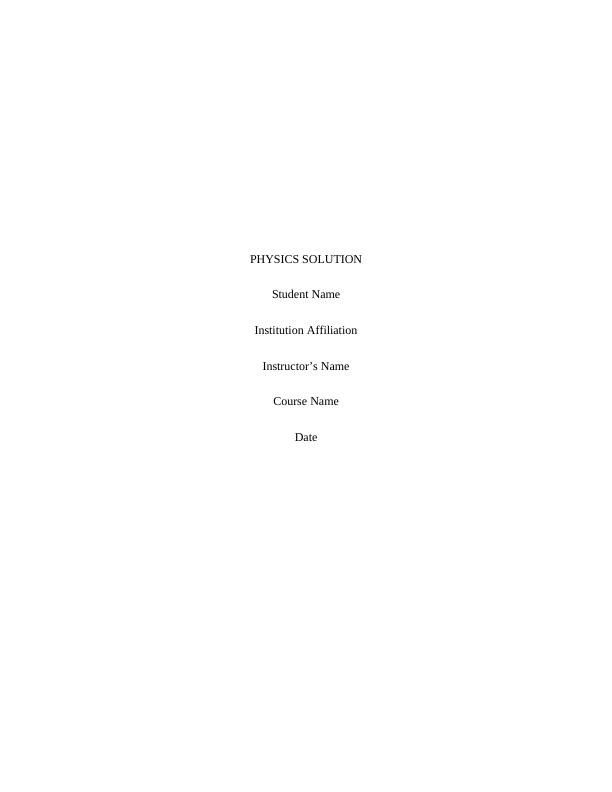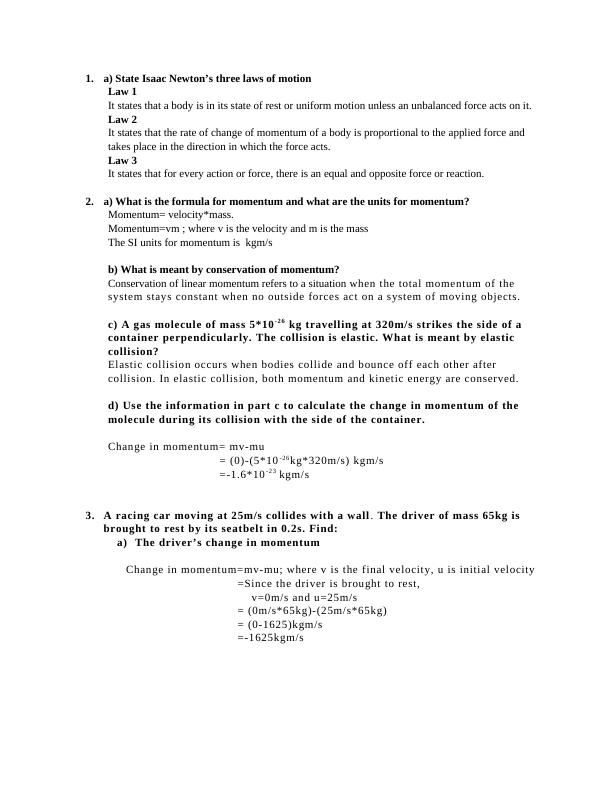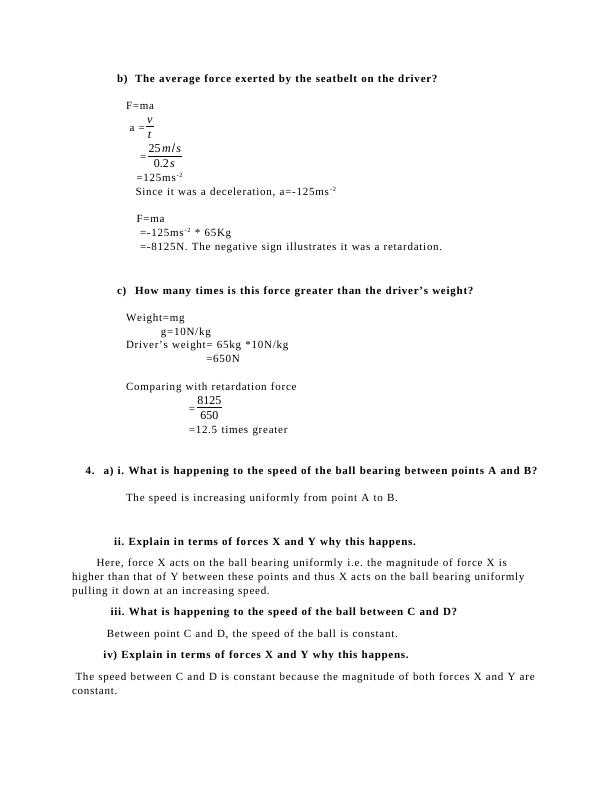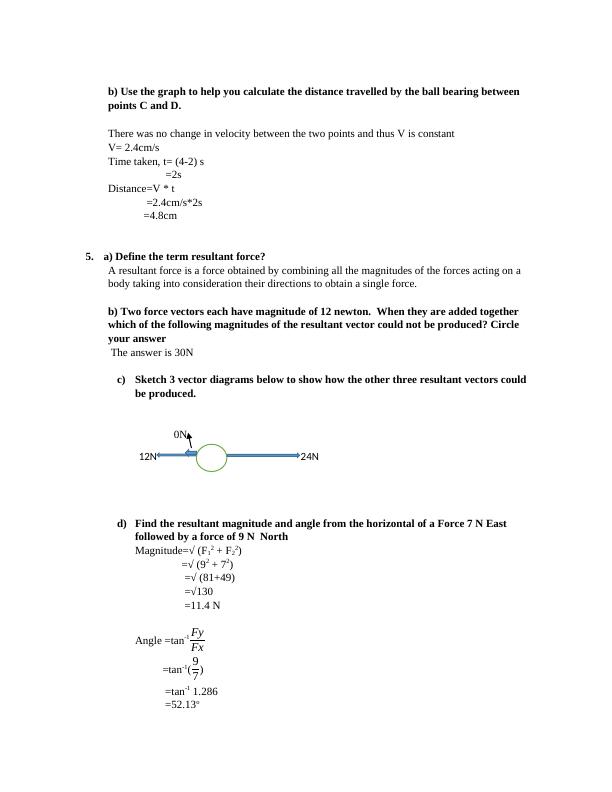Physics Solution
13 Pages1775 Words424 Views
Added on 2023-04-08
About This Document
This document provides detailed solutions for various physics problems and equations. It covers topics such as Newton's laws of motion, momentum, collisions, forces, equations of motion, and more. The solutions are explained step-by-step, making it easier for students to understand and apply the concepts. Whether you need help with homework or want to improve your understanding of physics, this document is a valuable resource.
Physics Solution
Added on 2023-04-08
ShareRelated Documents
End of preview
Want to access all the pages? Upload your documents or become a member.
Solved Physics Problems on Momentum and Impulse
|3
|724
|212
Single Degree of Freedom Vibration
|16
|1187
|243




